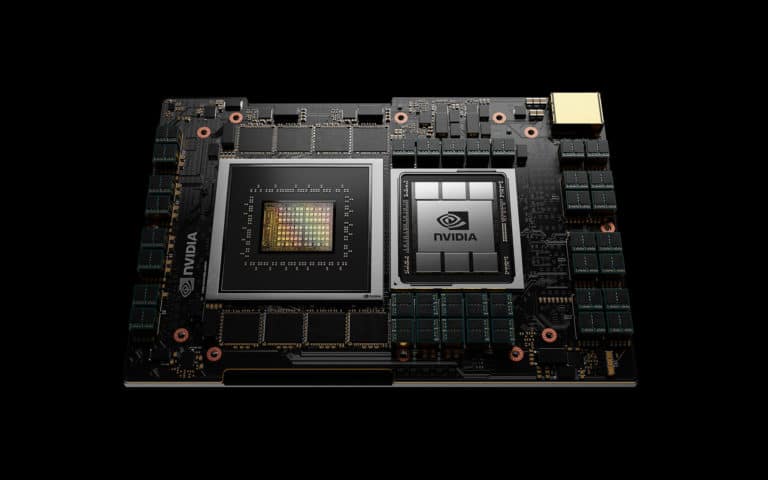Nvidia has announced the Grace CPU. It is a data centre processor based on the Arm architecture. According to Nvidia the CPU excels in tasks related to artificial intelligence and high-performance computing.
The new processor was announced in a press release from Nvidia. The chip designer claims that the Grace offers ten times the performance of today’s fastest servers for ‘the most complex AI and HPC workloads’. The company makes that comparison with its own DGX systems. These are equipped with two AMD Epyc 7742 processors with a total of 128 cores and eight Nvidia A100 GPUs.
Fast interconnects
Nvidia does not share much information about the processor design. The company mentions Neoverse cores, but details about them remain in the dark. Nvidia does talk about the fast interconnects between the CPU and the GPU. For this, the company uses a new generation of its NVLink interconnects, which allow a bandwidth of 900GB/s between the two chips. Two separate Grace CPUs can also use the technology to quickly exchange data, with a maximum bandwidth of 600GB/s. The processor can handle error-correcting LPDDR5x memory, which at 500GB/s should offer twice the bandwidth of DDR4.
Two new supercomputers
Nvidia already has several interested customers for the new processor. One of these customers is the Swiss National Computing Center (CSCS), which wants to use the chips for research into all sorts of things that require a lot of computing power, from climate to economics. A similar supercomputer will also be installed at Los Alamos National Laboratory. Both supercomputers are being built in cooperation with Hewlett Packard Enterprise.
Availability
According to Nvidia, these supercomputers will be the world’s fastest supercomputers for AI workloads, with a maximum computing power of more than 20 exaflops. The supercomputers will also feature new, as yet unannounced Nvidia GPUs. The new supercomputers are scheduled for delivery in 2023. Much earlier is also not possible, as the Grace processors will not be released until early 2023.
Tip: Why the acquisition of ARM by Nvidia should be prohibited
